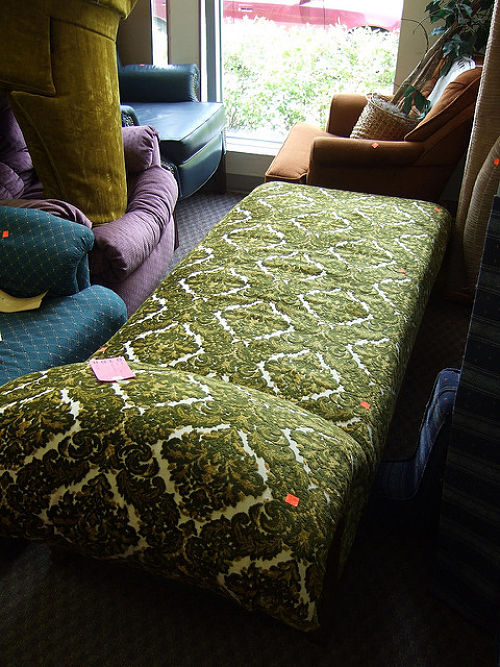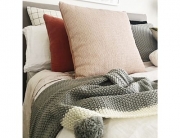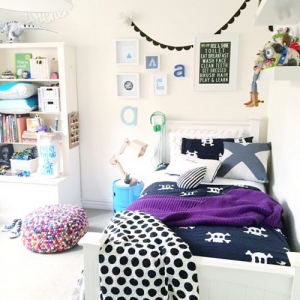When your old sofa begins to look tired and it’s had too many years of supporting the whole family through movie nights and lazy weekends, thoughts turn to getting a fresh one. But even with the massive choice available today, it’s not always easy to find exactly what you’re looking for. That’s when a bit of DIY and some grafting can bring you not only the couch you want in a fabric that you love, but also give you a big dose of self-satisfaction at what you’ve created.
Renovating a sofa sounds complicated, but it doesn’t have to be. One of the easiest ways is to use the existing covers on a couch as a pattern for making new ones. If you set aside the day to do the work, you could be cosying up on your refurbished efforts after only a few hour’s work.

“Couch” (CC BY 2.0) by spacemanor
Some family couches get too much love!
You might plan to use your own sofa as the base, or if yours is past its prime, you can pick up a second-hand couch for a song on a site like Gumtree. Keep an eye out for the style and size you’re interested in – new ads pop up all the time and with a bit of patience, you’re bound to find what you’re looking for in the local area. You’re also more likely to find some really interesting vintage pieces when you buy second-hand – if you want to give your living room a really unique look.

“Fainting Couch” (CC BY-SA 2.0) by *USB*
Once you’ve got your chosen couch, measure it and its cushions before buying the fabric. You’ll need to include the length, width and height of the couch and its cushions to calculate the length of fabric required. If you take your measurements into a fabric store, the staff will help you get the correct amount of material. A good rule of thumb is to buy 10% more as this allows for any errors.
How to do the job
- Cut off the current couch fabric with scissors, following the seams. The more careful the cut, the better template you’ll have for the new fabric.Take the couch fabric off in sections.
- With the new fabric face down and flat, lay the old fabric on top and trace the outline of each section, including the cushions. Allow for one inch seams as you cut out each section.
- Check that the frame of the couch is in good order – now’s the time to tighten any screws or batons that have loosened. If the frame padding looks patchy, you can replace it with new synthetic padding and similarly, if the cushions are flattened, you can cut fresh ones from foam.
- Use a staple gun to attach the fabric to the frame of the couch, starting at one end, smoothing the fabric for a tight finish as you go along. In theory, the seams of the fabric should line up to where the old seams were. Double check that none of the staples will be visible.
- Once you’ve done the frame, you can turn your attention to the cushions. Using the templates of the old cushion covers you can sew slipcovers and if you include a zip, this will allow for future washing. If you want, you can recycle the old zippers from the original cushion covers.
- Check the fit when you’ve sewn two sides – if there’s too much fabric, you can adjust the third side, which will save you having to unpick once you’ve put the zippers in.

Image Source
Depending on your sewing and DIY skills, this may be a big challenge or an easy job for you. If you’re worried about how to do it, it can be useful to watch some youtube videos so that you see the process in action and pick up useful tips.
When you get the job done, and the family is curled up on your creation, you’ll love your new couch all the more because of the effort you’ve put into it.



































